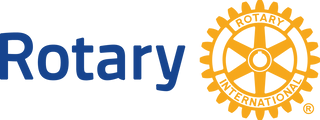The burial sites
Previously
the graves were close together here. The vast majority have disappeared over
time, but it is still possible to see some signs of these, now unmarked graves,
as sunken-in rectangularly shaped top soil.
Existing
graves
Apart from the war graves,
there are currently 58 visible burial sites in Krigskirkegården. Eleven are
family burial sites with two to twelve buried. With the exception of one grave,
they are all located in the eastern part of the cemetery.
• Two are from the end of the 18th century
• Five from the first half of the 19th century
• Eighteen from the last half of the 19th century
• Twenty-nine from the 20th century
• Four in the 21st century.
The oldest
remaining tombstone is for a nearly three-year-old boy, Johan Anthon Bing, the
son of Stable Master (Equerry) Frederik Christian Bing. The boy died on August
26th, 1789.
Designs
The memorials are very
different. Material, design, inscriptions, symbols and the use of titles
provide interesting insights into prevailing styles, social conditions,
personal and family status.
Until the beginning of the 19th
century, horizontal stone slabs were most common.
In 1805, a royal decree was
issued that burials inside the churches should cease. Now the cemeteries were
characterised by more dignity. Most of the memorials were now upright stones.
The gravestones varied from small and simple to gradually higher and slimmer
obelisks. The obelisk, a symbol of rebirth and new life, was mostly used from
the end of the 19th century until well into the 20th century.
With neoclassicism, at the end
of the 18th century, major changes in the design of memorials came
to Norway.
The use of symbols was
introduced, and cast iron was well suited to reproduce the symbols. At
Krigskirkegården we find eight remaining cast iron plates. The two oldest are
the graves of the parents of the boy who has the oldest remaining grave in the
cemetery. The other six are from 1849 to 1893. The cast iron plates have
symbols such as:
·
Two crossed torches - symbol of
marital love
·
A wreath of oak leaves around the
text, crossed sword and axe, together with a cannonball - symbols of the
victory following the course of life
·
Oil bottles - interpreted as jars for
the mourners' tears
During the 19th century it became common to
fence in the graves with cast iron latticework. At Krigskirkegården one such
grave monument still exists.
The 20th century memorials are also characterised by
symbolism; a beautifully crafted granite angel, an angel motive in a circular
inlaid porcelain field, and a seemingly broken pillar that symbolises a young
person's interrupted life. A granite tombstone is shaped like an urn - the
symbol of both death and resurrection. Another tombstone is shaped like a
scroll on a shelf - the book of life and death.
The oldest remaining graves
The oldest graves are found farthest
to the east in the cemetery. These four graves belong to the Bing and Kuhlmann
families; Johan Anthon Bing (1786-1789), Josefine Marie Kuhlmann (1726-1797),
Frederik Christian Bing (1752-1802) and Johanne Anthonette Bing, b. Kuhlmann,
(1753-1837).
The tombs are horizontal
slabs, the two oldest in grey marble. They were later raised on masonry plinths
to prevent damage by moisture and lawn mowing. The other two are made of cast
iron.
The tombstone of Johan Anthon
Bing is the cemetery's oldest memorial. Stable Master Frederik Christian Bing's
son was no more than a scant three years old. The tombstone has the following
text:
HERE BELOW RESTS JOHAN ANTHON BING, AT HIS BIRTH,
OCTOBER 21ST 1786 HE BECAME THE JOY OF HIS PARENTS, ON HIS DEATH,
AUGUST 26TH 1789 THEIR GREATEST SORROW. HE WAS FOR 2 YEARS 10 MONTHS
AND 6 DAYS HIS PARENTS’ MOST PRECIOUS HOPE, THE FAVORITE OF WORSHIPERS OF THE
LORD BUT IN PARTICULAR GRATIFYING FOR GOD WHICH IS WHY HE DIED SO EARLY.
